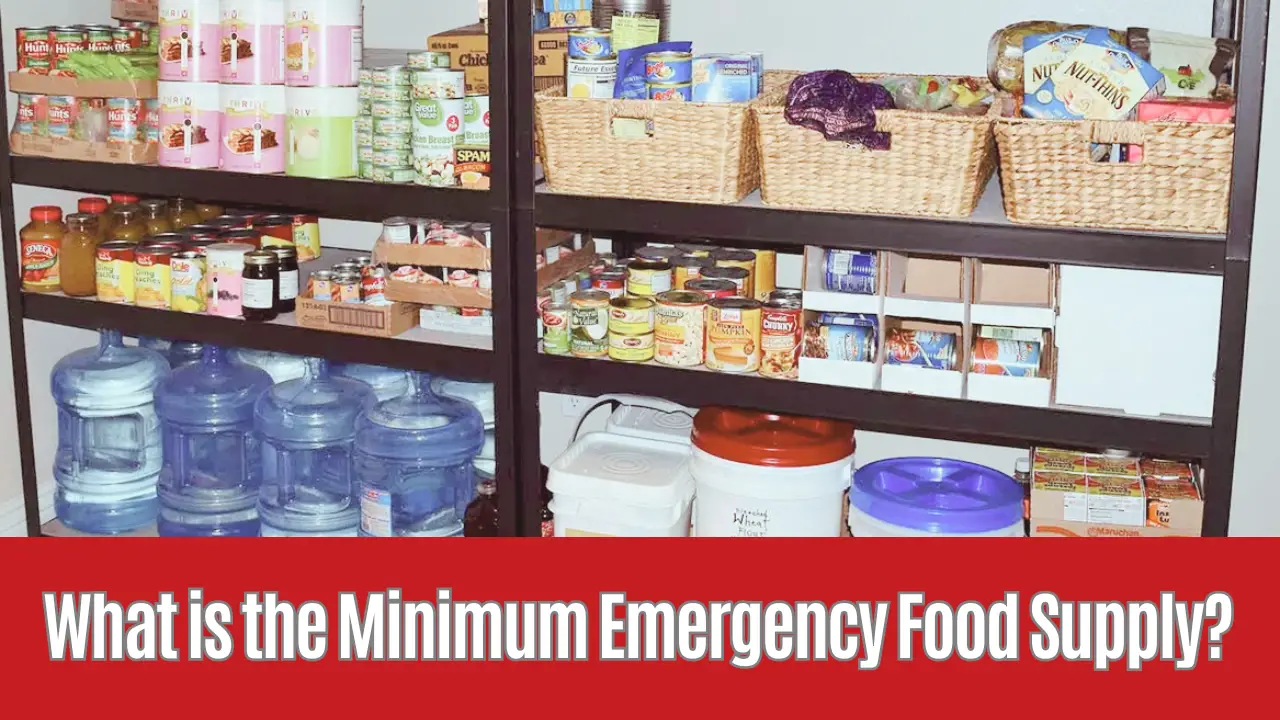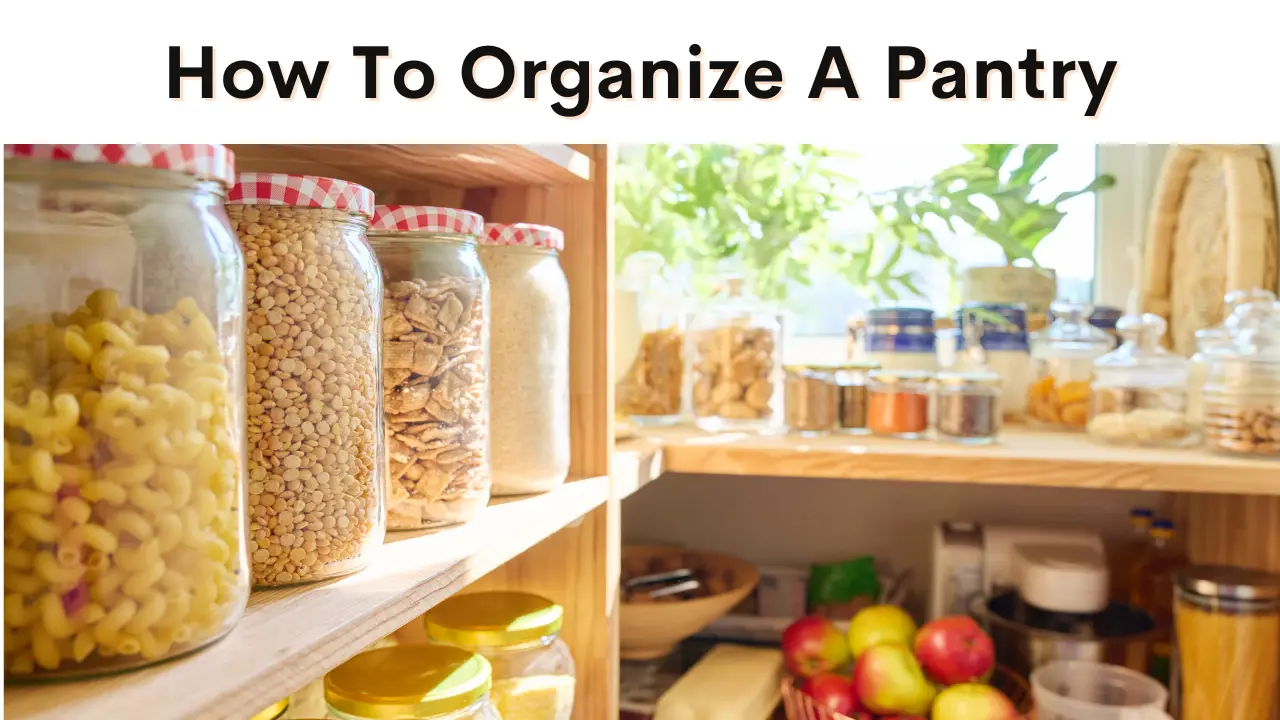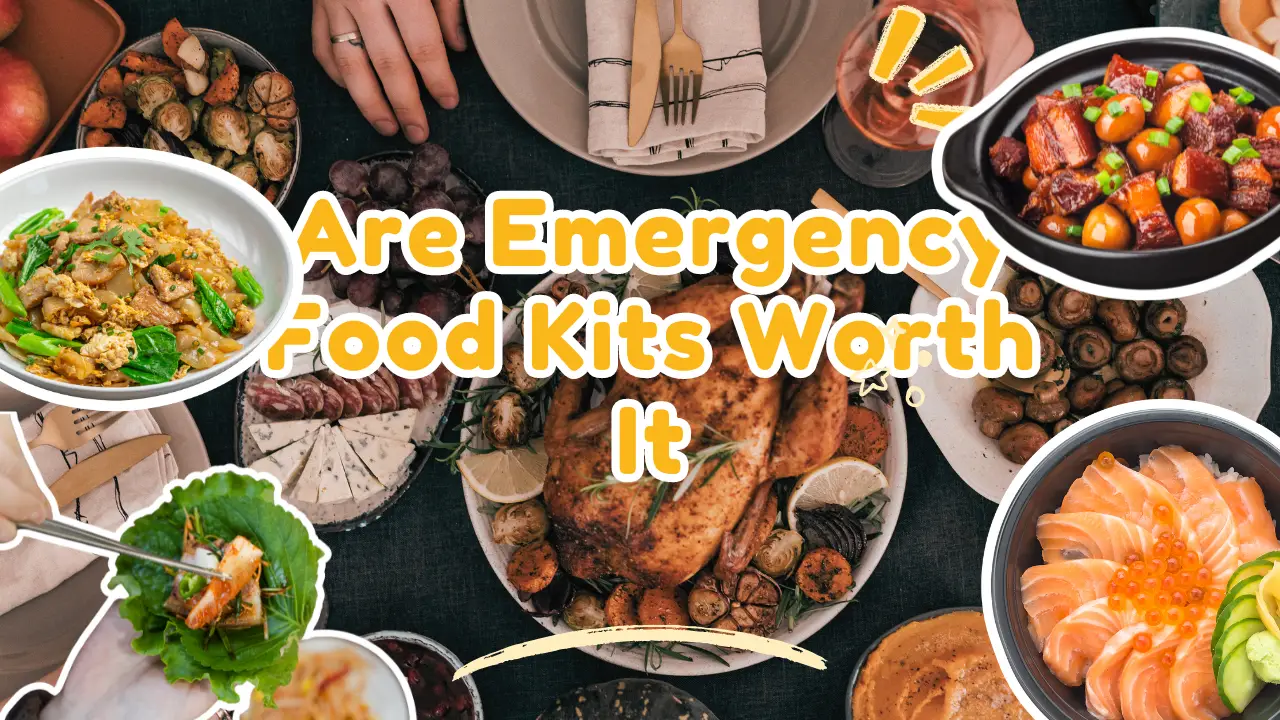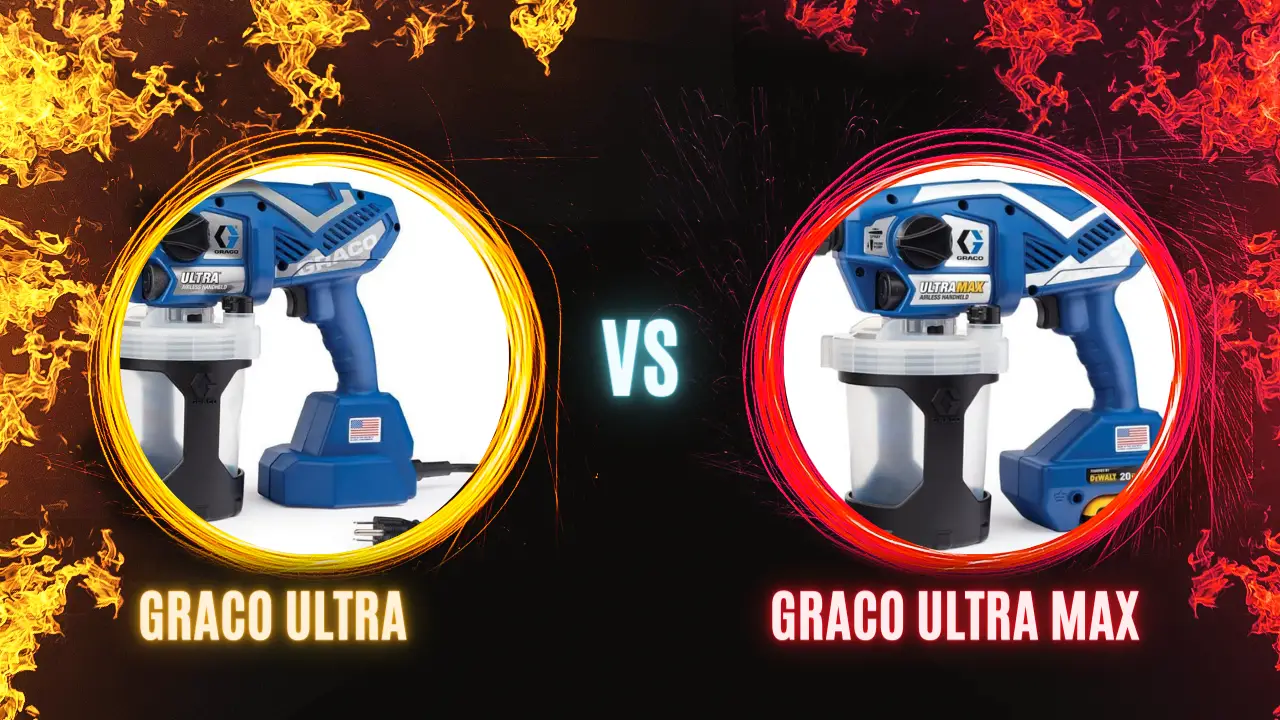Are you considering using chalk paint for your next DIY project but wondering if it is safe for food-contact surfaces? Well, you’ve come to the right place!
In this article, we will explore the question, ‘Is chalk paint food safe?’ and provide you with the information you need to make an informed decision. Chalk paint has gained popularity in recent years for its ability to transform furniture and other surfaces with a matte, vintage look.
However, when it comes to using chalk paint on surfaces that come into contact with food, you may have concerns about its safety. It’s essential to understand the composition of chalk paint and assess its suitability for food-contact surfaces.
Is chalk paint food safe? No, chalk paint is not food-safe, except if it has cured completely for at least 30 days. It contains various additives and chemicals that make it unsuitable for surfaces that come into direct contact with food. It is recommended to use food-safe paints or sealers for items like kitchen utensils or dining furniture.
So, let’s dive into the topic and discover if chalk paint is the right choice for your kitchen table, countertops, or other food-related projects.
Understanding the Composition of Chalk Paint
Chalk paint, with its unique composition, offers a visually appealing way to transform furniture and create a vintage look. When it comes to understanding the composition of chalk paint, it’s important to know its ingredients and potential hazards.
Chalk paint typically consists of three main components: pigments, binder, and water. Pigments provide the color, while the binder helps the paint adhere to surfaces. Water is added to create a smooth consistency.
One of the main concerns regarding chalk paint is its potential hazards. While chalk paint is generally safe to use on furniture and other surfaces, it’s important to be aware of any potential allergens or irritants in the paint. Some brands of chalk paint may contain additives or chemicals that could cause skin irritation or respiratory issues.
It’s always a good idea to read the product label and follow any safety precautions provided by the manufacturer. If you have any concerns about using chalk paint, it’s best to consult with a professional or choose a paint that is specifically labeled as food-safe.
Assessing the Safety of Chalk Paint on Surfaces
When it comes to assessing the safety of chalk paint on surfaces, there are a few key points to consider. First, it’s important to understand FDA regulations and guidelines regarding paint and coatings. This can help you determine if a particular chalk paint is safe for use.
Additionally, it’s crucial to be aware of potential health risks and controversies surrounding chalk paint, as some formulations may contain harmful substances.
Is chalk paint food safe?: FDA Regulations and Guidelines
Although the FDA regulations and guidelines may provide reassurance, it’s crucial to consider the potential risks associated with using chalk paint for food-related purposes. While the FDA has not specifically regulated chalk paint, they do have regulations in place for substances that come into contact with food. These regulations ensure that the materials used are safe and do not pose any health risks when used as intended.
To better understand the safety of using chalk paint for food-related purposes, let’s take a look at the FDA regulations and guidelines for substances that come into contact with food. The FDA has established a set of regulations known as the Food Contact Substances (FCS) regulations. These regulations determine the safety of materials that are intended to come into contact with food, including coatings and paints. The FCS regulations require manufacturers to conduct extensive testing to ensure that their products do not migrate harmful substances into food and are safe for use.
Additionally, the FDA provides guidelines and recommendations for manufacturers to follow when developing and testing food contact substances. By adhering to these regulations and guidelines, manufacturers can ensure that their products meet the necessary safety standards.
| FDA Regulations | Food Safety |
|---|---|
| Food Contact Substances (FCS) regulations | Ensure safety of materials that come into contact with food |
| Extensive testing required | Products should not migrate harmful substances into food |
| Guidelines and recommendations provided | Manufacturers can develop safe products |
While the FDA regulations and guidelines provide some reassurance, it’s important to note that chalk paint may not have been specifically tested or approved for food-related purposes. Therefore, it’s best to exercise caution and avoid using chalk paint on surfaces that come into direct contact with food. If you’re looking to paint items that will be used for food, it’s advisable to choose paint specifically labeled as food-safe or to use alternative coatings that have been tested and approved for such purposes.
Potential Health Risks and Controversies
Despite the controversies surrounding its use, it’s important to be aware of potential health risks associated with chalk paint for food-related purposes.
While chalk paint may be appealing for its smooth finish and vintage look, there are valid health concerns that should not be overlooked.
One of the main concerns is the lack of testing standards specifically designed for chalk paint used on surfaces that come into contact with food.
Unlike other types of paint that have undergone rigorous testing to ensure they are safe for food use, chalk paint does not have the same level of regulation.
This means that there is a higher risk of potential chemical leaching or contamination when using chalk paint on surfaces such as kitchen cabinets or dining table tops.
In addition to the lack of testing standards, there are also controversies surrounding the ingredients used in chalk paint.
Some chalk paint brands may contain additives or chemicals that are not food-safe.
This can include substances like lead, which is a known toxin that can cause serious health problems if ingested.
While reputable chalk paint brands may claim to be non-toxic, it is still important to exercise caution and do thorough research before using chalk paint for food-related purposes.
Ultimately, it is crucial to prioritize the safety of you and your loved ones by ensuring that any paint used on surfaces that come into contact with food meets appropriate testing standards and does not pose any potential health risks.
Applying Chalk Paint to Non-Food Contact Surfaces
To give your non-food contact surfaces a charming and vintage look, you can easily apply chalk paint. Chalk paint is a versatile and popular choice for decorative applications, offering a wide range of creative possibilities. Whether you want to transform an old piece of furniture or give your walls a rustic touch, chalk paint can help you achieve the desired effect.
Its matte finish gives surfaces a soft and velvety appearance, adding a touch of elegance to any room. With a wide variety of colors available, you can easily customize your project to match your personal style and home decor.
One of the great advantages of using chalk paint on non-food-contact surfaces is its ease of application. Unlike traditional paints, chalk paint requires minimal prep work. You don’t need to sand or prime the surface beforehand, saving you time and effort. Simply clean the surface to remove any dirt or grease, and you’re ready to start painting.
Chalk paint also dries quickly, allowing you to complete your project in a shorter amount of time. Plus, it’s low in odor, making it a convenient choice for indoor use.
So, go ahead and let your creativity flow by using chalk paint on your non-food contact surfaces to add a touch of vintage charm to your home.
Exploring Alternatives for Food Contact Surfaces
Now that we’ve discussed applying chalk paint to non-food contact surfaces, let’s explore alternatives for food contact surfaces. It’s important to consider the potential health risks associated with using chalk paint on surfaces that come into contact with food.
While chalk paint may be safe for non-food-contact surfaces, it is not recommended for use on items such as cutting boards, kitchen utensils, or plates that are used for serving or eating food.
When it comes to food-contact surfaces, it’s best to opt for materials that are specifically designed for this purpose. Here are some alternatives to consider:
- Food-safe sealants: Look for sealants that are specifically labeled as food-safe. These products are designed to create a protective barrier on the surface of the item, ensuring that no harmful chemicals or bacteria can come into contact with the food.
- Natural materials: Consider using materials such as wood, bamboo, or glass for food contact surfaces. These materials are naturally non-toxic and do not require any additional sealants or treatments.
- Stainless steel: Stainless steel is a popular choice for kitchen utensils and appliances because it’s non-reactive and easy to clean. It’s also a safe option for food-contact surfaces, as it doesn’t leach any harmful chemicals.
- Food-grade plastic: If you prefer using plastic for food contact surfaces, make sure to choose products that are labeled as food-grade. These plastics are specifically designed to be safe for contact with food and don’t contain any harmful chemicals.
Exploring alternatives to chalk paint for food-contact surfaces is essential to ensuring the safety of your food and your health. By choosing materials that are specifically designed for this purpose, you can have peace of mind knowing that you’re taking the necessary precautions to avoid any potential health risks.
Making an Informed Decision
When making an informed decision about food contact surfaces, it’s important to consider your personal preferences and risk tolerance.
You should take into account what’s important to you in terms of safety and functionality.
Additionally, consulting with experts and professionals in the field can provide valuable insights and guidance to help you make the best choice for your specific needs.
Considering Personal Preferences and Risk Tolerance
Although chalk paint may not be guaranteed to be food-safe, you can still make your own choices based on your personal preferences and risk tolerance. Here are three things to consider when thinking about this subtopic:
- Personal Preferences: Everyone has different preferences when it comes to their food and the materials they use in their home. Some individuals may prioritize using only food-safe products, while others may be more lenient. It’s important to reflect on your values and what matters most to you when deciding on using chalk paint on surfaces that come into contact with food.
- Risk Tolerance: Assessing your risk tolerance is crucial when deciding whether to use chalk paint on food-contact surfaces. While there may be concerns about the potential transfer of chemicals or toxins, it’s essential to weigh the actual risk against your comfort level. If you’re particularly sensitive to certain substances or have health conditions that make you more vulnerable to potential risks, you may want to err on the side of caution.
- Research and Information: Before making a decision, it’s always wise to gather information about the specific brand and type of chalk paint you intend to use. Look for any certifications or safety standards that the product meets. Additionally, consider reaching out to the manufacturer or consulting with experts in the field to get a better understanding of the potential risks involved. Armed with this knowledge, you can make an informed decision that aligns with your personal preferences and risk tolerance.
Ultimately, the choice of whether to use chalk paint on surfaces that come into contact with food is a personal one. By considering your personal preferences and risk tolerance and gathering relevant information, you can make an educated decision that suits your needs and comfort level.
Consulting with Experts and Professionals
Consider seeking advice from professionals and experts in the field to gain valuable insights and ensure you are making informed decisions about using chalk paint on surfaces that come into contact with food. Consulting experts who specialize in food safety regulations and paint chemistry can provide you with specific information and guidance tailored to your unique situation. These professionals have the knowledge and experience to evaluate the safety of chalk paint for food contact and can help you understand any potential risks or concerns.
By reaching out to professionals, you can gain a comprehensive understanding of the potential hazards and benefits associated with using chalk paint on surfaces that come into contact with food. They can provide you with information on the specific ingredients in the paint, their potential interactions with food, and any potential health risks. Additionally, experts can offer recommendations on alternative paint options that may be more suitable for food-contact surfaces. Consulting experts and seeking professional advice can help you make informed decisions and give you peace of mind when using chalk paint in areas where food will be present.
| Pros of Consulting Experts | Cons of Consulting Experts |
|---|---|
| Gain valuable insights and information | May incur additional costs |
| Ensure you are making informed decisions | May require additional time |
| Get specific guidance tailored to your situation | May need to schedule appointments |
| Receive recommendations for alternatives | May need to research and vet experts |
Engaging with experts and professionals can provide you with the necessary knowledge to make informed decisions about using chalk paint on surfaces that come into contact with food. Their expertise will help you understand the potential risks and benefits, giving you confidence in your choice of paint and ensuring the safety of your food.
Getting Started with Chalk Paint
Applying chalk paint is a straightforward process that requires minimal preparation. Begin by thoroughly cleaning the surface, ensuring it is free from grease and dirt. The inherent adhesive properties of chalk paint negate the need for extensive sanding or priming. Utilize a high-quality brush to apply the paint in thin, even coats, allowing each layer to dry before proceeding to the next. Experiment with different brush strokes to achieve diverse textures and finishes.
Enhancing the Finish with Chalk Paint Wax
Chalk paint wax serves a dual purpose, protecting and enhancing the finished look of your project. Once the paint has dried completely, apply a thin layer of chalk paint wax using a wax brush or lint-free cloth. Work the wax into the paint, ensuring even coverage. Allow the wax to dry and buff the surface to a soft sheen. The wax not only seals the paint but also adds a subtle depth to the color.
Patience is Key: Allowing Chalk Paint Wax to Cure
Proper curing of chalk paint wax is crucial for achieving a durable and long-lasting finish. The curing time may vary depending on environmental factors such as temperature and humidity. In general, allow the wax at least 24 hours to cure before subjecting the painted surface to heavy use.
Caring for Your Chalk Paint and Wax Finish
Maintaining the beauty of your chalk paint and wax finish is relatively simple. Avoid harsh chemicals and abrasive cleaners, opting instead for a gentle wipe with a damp, soft cloth for regular cleaning. In case of stubborn stains, a mild soap solution should suffice. Periodically reapply wax to high-traffic areas to ensure continued protection.
Exploring Chalk Paint Lacquer
For a more robust protective finish, consider using chalk paint lacquer. This is particularly suitable for surfaces that endure heavy use or outdoor exposure. Apply the lacquer in thin coats, allowing sufficient drying time between layers. Lightly sand between coats for a smooth finish. Lacquer is an excellent choice for tabletops, kitchen cabinets, and outdoor furniture.
Painting Over Stained Wood: A Feasible Feat
Chalk paint adheres remarkably well to stained wood surfaces. Ensure the wood is clean and free of any glossy finishes. The porous nature of chalk paint allows it to grip onto stained wood, providing a beautiful, opaque finish.
Touching Up or Repairing Damage:
Touching up chalk paint is a straightforward process. Keep a small amount of the original paint for future touch-ups. For minor damage, lightly sand the affected area, apply a thin layer of chalk paint, and blend it seamlessly with the surrounding surface.
Unleashing Your Creativity: Mixing Your Chalk Paint Color
One of the notable advantages of chalk paint is its mixability. Experiment with different colors by mixing chalk paint shades to create a custom palette. Keeping track of your ratios will ensure consistent results.
Beyond Furniture: Using Chalk Paint on Various Surfaces
- On Walls: Chalk paint is an excellent option for transforming walls, providing a velvety, textured finish. Apply the paint in vertical or horizontal strokes for varied effects. Seal the painted wall with wax or lacquer for added durability.
- On Floors: Transform tired and worn-out floors with chalk paint. Seal the painted floor with multiple layers of wax or lacquer, depending on foot traffic. Area rugs can add extra protection and style.
- On Metal: Chalk paint adheres well to metal surfaces, making it an ideal choice for reviving metal furniture, fixtures, or decorative pieces. Use a metal primer for added adhesion and durability.
- On Kitchen Cabinets: Give your kitchen a facelift by painting cabinets with chalk paint. Clean the surfaces thoroughly, remove cabinet hardware, and apply chalk paint in even coats. Seal it with wax or lacquer for a durable finish that withstands daily use.
- On Fireplaces, Mantelpieces, and Radiators: Transform these focal points with chalk paint for a unique, shabby-chic look. Ensure the surfaces are clean and free of soot or grease. Seal with wax or lacquer to protect against heat and maintain the finish.
Taking Chalk Paint Outdoors
Chalk paint can breathe new life into outdoor furniture, planters, and even exterior walls. Choose a durable finish like chalk paint lacquer for prolonged exposure to the elements.
A Versatile Solution: Chalk Paint on Tiles
Revamp outdated tiles with chalk paint for a cost-effective solution. Clean the tiles thoroughly, and apply chalk paint in thin coats. Seal with wax or lacquer for added protection against moisture.
Beyond Walls: Using Annie Sloan Paint as a Chalkboard
Annie Sloan’s paint can be transformed into a chalkboard by applying multiple coats and allowing it to cure. Use chalk or chalk markers for a functional and creative surface.
Innovative Application: Using Chalk Paint in a Sprayer
Chalk paint can be sprayed for a smooth, professional finish. Dilute the paint slightly and test the spray pattern on a scrap surface before applying it to your project. Ensure proper ventilation and use appropriate safety gear.
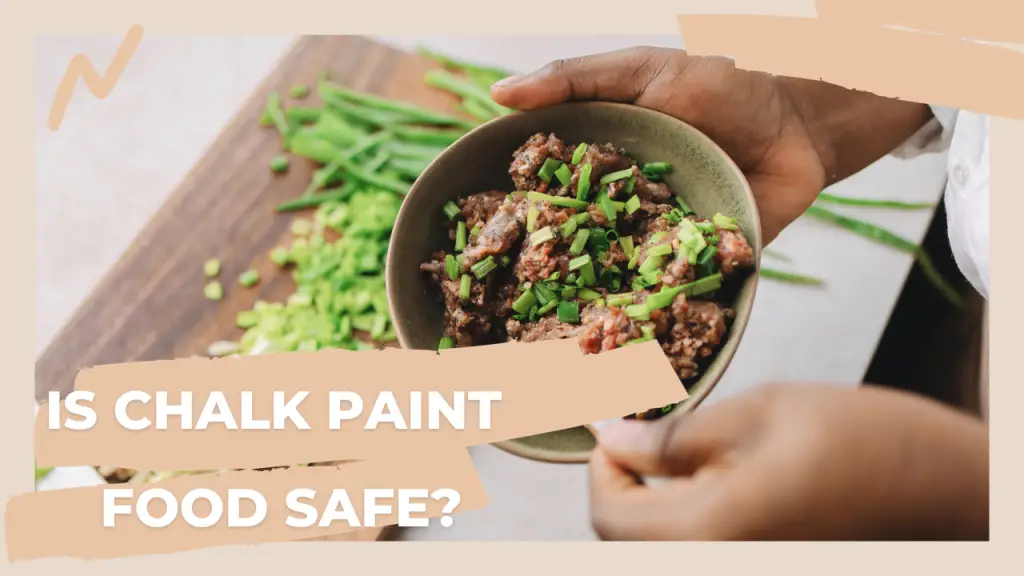
Conclusion
In conclusion, is chalk paint food safe? If you’re considering using chalk paint on surfaces that come into contact with food, it’s important to be aware of its composition and safety. While chalk paint itself is non-toxic and generally considered safe, it’s not specifically designed for food-contact surfaces. Therefore, it’s recommended to avoid using chalk paint on surfaces such as cutting boards, countertops, or dining tables where food is prepared or consumed.
However, chalk paint can still be a great option for non-food-contact surfaces such as furniture, walls, or decorative items. It offers a unique and versatile finish that can transform any space. If you decide to use chalk paint on these surfaces, make sure to follow the manufacturer’s instructions and allow the paint to fully cure before using or placing any objects on the painted surface.
Ultimately, when it comes to food-contact surfaces, it’s best to explore alternatives such as food-grade sealants or paints specifically designed for these purposes. This will ensure the safety and longevity of your surfaces while still achieving the desired aesthetic. By making an informed decision and considering the specific needs of each surface, you can enjoy the benefits of chalk paint while keeping your food safe.
